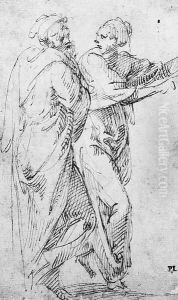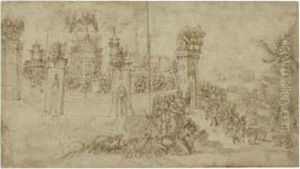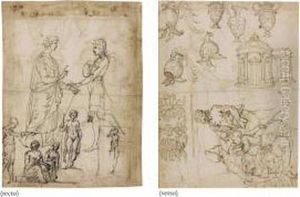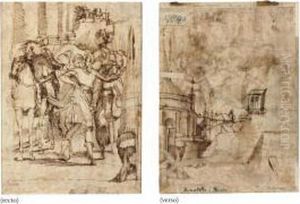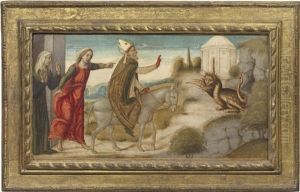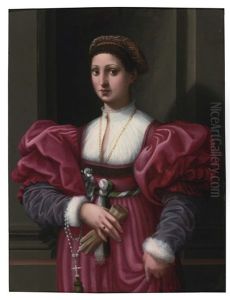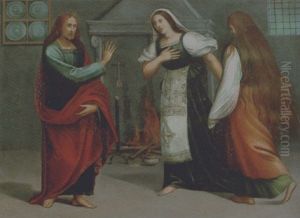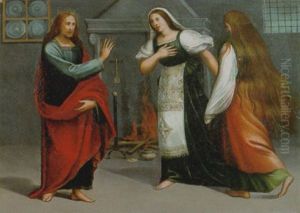Vincenzo Tamagni Da San Gimignano Paintings
Vincenzo Tamagni, often referred to as Vincenzo da San Gimignano due to his place of origin, was an Italian Renaissance painter active during the early 16th century. Born in 1492 in San Gimignano, a small town in the province of Siena, Tuscany, Tamagni showed an aptitude for the arts at a young age. His work is known for its incorporation of the High Renaissance style, characterized by idealized beauty, harmonious composition, and a focus on the human figure.
Tamagni's training and early career are not thoroughly documented, but it is believed that he was a student of the Sienese painter Il Sodoma. His style also shows influence from other prominent artists of the time such as Raphael and Michelangelo, indicating that he may have spent time in Rome, absorbing the dynamic artistic environment there.
One of his most significant contributions to the art world was his work in the Vatican, where he assisted Raphael in the decoration of the Stanze di Raffaello (Raphael Rooms). Through this collaboration, Tamagni was able to hone his skills and develop his own artistic voice. His work in the Vatican allowed him to establish connections that would be pivotal for his career.
After his time in Rome, Tamagni returned to San Gimignano, where he continued to work and receive commissions. His paintings often featured religious themes, common for the time, and he contributed to various churches and institutions. His frescoes and altarpieces display a mastery of color and a delicate approach to figures, blending the influence of his mentors with his own sensibilities.
Unfortunately, Tamagni's career was cut short when he died in 1530 at the age of 38. Despite his early death, he left behind a body of work that contributes to our understanding of the High Renaissance period and its stylistic developments. His paintings can still be admired in various locations in Italy, providing insight into the artistic transitions of the era.
